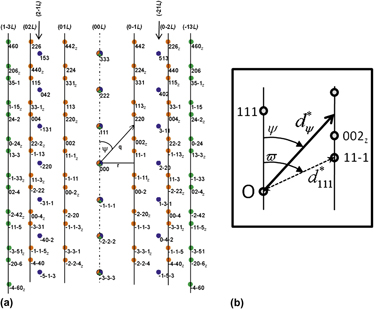Crossref Citations
This article has been cited by the following publications. This list is generated based on data provided by
Crossref.
Mittemeijer, Eric J.
and
Welzel, Udo
2012.
Modern Diffraction Methods.
p.
87.
Wu, F.
Zhu, Y.T.
and
Narayan, J.
2013.
Grain size effect on twin density in as-deposited nanocrystalline Cu film.
Philosophical Magazine,
Vol. 93,
Issue. 35,
p.
4355.
Kurz, S.J.B.
Ensslen, C.
Welzel, U.
Leineweber, A.
and
Mittemeijer, E.J.
2013.
The thermal stability of Ni–Mo and Ni–W thin films: Solute segregation and planar faults.
Scripta Materialia,
Vol. 69,
Issue. 1,
p.
65.
Wang, Yuejian
Zhang, Jianzhong
Wei, Qiang
and
Zhao, Yusheng
2013.
Grain size effects on the compressibility and yield strength of copper.
Journal of Physics and Chemistry of Solids,
Vol. 74,
Issue. 1,
p.
75.
Rane, Gayatri K.
Apel, Daniel
Welzel, Udo
and
Mittemeijer, Eric Jan
2013.
The microstructural evolution and thermal stability of nanocrystalline ball-milled Ni–15 at.% W powder.
Journal of Materials Research,
Vol. 28,
Issue. 6,
p.
873.
Kurz, S. J. B.
Maisel, S. B.
Leineweber, A.
Höfler, M.
Müller, S.
and
Mittemeijer, E. J.
2014.
Discovery of a thermally persistent h.c.p. solid-solution phase in the Ni-W system.
Journal of Applied Physics,
Vol. 116,
Issue. 8,
Kurz, S.J.B.
Leineweber, A.
and
Mittemeijer, E.J.
2014.
Anomalously high density and thermal stability of nanotwins in Ni(W) thin films: Quantitative analysis by x-ray diffraction.
Journal of Materials Research,
Vol. 29,
Issue. 15,
p.
1642.
Flötotto, D.
Wang, Z. M.
Markel, I. J.
Kurz, S. J. B.
and
Mittemeijer, E. J.
2016.
Microstructure and intrinsic stress evolution during epitaxial film growth of an Ag0.93Al0.07 solid solution on Si(111); excessive planar faulting due to quantum confinement.
Journal of Applied Physics,
Vol. 120,
Issue. 15,
Csiszár, G.
Kurz, S.J.B.
and
Mittemeijer, E.J.
2016.
Stability of nanosized alloy thin films: Faulting and phase separation in metastable Ni/Cu/Ag-W films.
Acta Materialia,
Vol. 110,
Issue. ,
p.
324.
Zhang, Chao
Feng, Kai
Li, Zhuguo
Lu, Fenggui
Huang, Jian
Wu, Yixiong
and
Chu, Paul K.
2017.
Enhancement of high-temperature strength of Ni-based films by addition of nano-multilayers and incorporation of W.
Acta Materialia,
Vol. 133,
Issue. ,
p.
55.
Csiszár, G.
Makvandi, A.
and
Mittemeijer, E. J.
2017.
Nanoscale stability of two- and three-dimensional defects in Cu/Ag–Mo thin films.
Journal of Applied Crystallography,
Vol. 50,
Issue. 1,
p.
152.
Valentino, Gianna M.
Krogstad, Jessica A.
Weihs, Timothy P.
and
Hemker, Kevin J.
2020.
Tailoring the coefficient of thermal expansion of ternary nickel alloys through compositional control and non-contact measurements.
Journal of Alloys and Compounds,
Vol. 833,
Issue. ,
p.
155024.
Nasim, Mohammad
Li, Yuncang
Wen, Ming
and
Wen, Cuie
2020.
A review of high-strength nanolaminates and evaluation of their properties.
Journal of Materials Science & Technology,
Vol. 50,
Issue. ,
p.
215.
Allahyarzadeh, M.H.
Aliofkhazraei, M.
Rouhaghdam, A. Sabour
Alimadadi, H.
and
Torabinejad, V.
2020.
Mechanical properties and load bearing capability of nanocrystalline nickel-tungsten multilayered coatings.
Surface and Coatings Technology,
Vol. 386,
Issue. ,
p.
125472.





